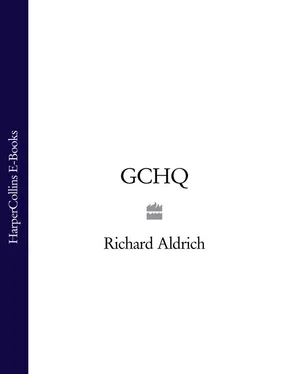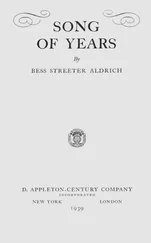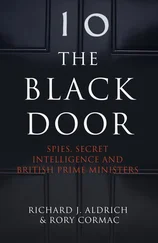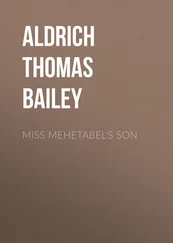5 UKUSA – Creating the Global Sigint Alliance
Much discussion about 100 per cent cooperation with the USA about SIGINT. Decided that less than 100 per cent cooperation was not worth having.
Admiral Andrew Cunningham, Chief of the Naval Staff,
21 November 1945 1
One of the most important legacies of the Second World War was the creation of the vast global signals intelligence alliance known as ‘UKUSA’. The signing of the UKUSA intelligence treaty between Britain, the United States, Canada, Australia and New Zealand has long been regarded as marking the birth of a secretive leviathan, a global multilateral alliance that has grown to embrace numerous countries and to command almost unlimited intelligence power. Its origins are often traced to a single landmark treaty between Britain, the United States and the Commonwealth deemed to be concluded in 1948. Indeed, the highly classified UKUSA treaty is widely considered to be nothing less than the linchpin of the West’s post-war intelligence system. UKUSA supposedly created a cosy Anglo-Saxon club sharing everything in the super-secret realm of sigint.
Remarkably, there is in fact no singular UKUSA ‘treaty’ of 1948, and none of the above assertions is true. Instead, UKUSA is less an alliance than a complex network of different alliances built up from many different overlapping agreements. It is the sum of a curious agglomeration of many understandings that were mostly between two countries only, that accumulated over more than two decades. 2 Britain and the United States concluded the main agreements in 1943 and 1946, together with a further convention in 1948. According to the historian Peter Hennessy they are still in force, and as recently as August 2006, some sixty years on, the authorities deemed them so sensitive that, after anxious deliberation, they announced that they could not be released. 3 Further agreements were added – and continue to be added – creating a complex spider’s web of cooperation. However, each agreement has its limits, and all parties have withheld sigint material from each other. In short, there is no common pooling of material. Moreover, relations between the various parties have often been tense, and latterly Washington has threatened some adherents, including Britain, Australia and New Zealand, with suspension or exclusion. If UKUSA is an alliance, its members are only ‘allies of a kind’. 4
It is also wrong to think of UKUSA as exclusively concerned with sigint. It is, rather, a sigint and security network. Security agreements on physical control of the sigint product and on protecting the security of communications were perhaps the most important aspects of the UKUSA network. Sigint reports on particular subjects were rigidly compartmentalised and given ‘Codeword’ status, ensuring that they could only be seen by people cleared to see that series, and making them effectively ‘above Top Secret’. Venona is the best-known example of such a Codeword. Much of this obsessive secrecy was codified in a biblical tome entitled ‘International Regulations on Sigint’, or ‘IRSIG’, which had reached its third edition by 1967. 5 UKUSA was also about secretly undermining the communications security of other states, even neutrals and allies. Communications security, or ‘comsec’, is perhaps even more sensitive than sigint. The efforts of the UKUSA powers to control it have been among the darkest secrets of alliance politics in Western Europe. In short, the realm of sigint alliances is profoundly realist – at times even paranoid – with operators ‘taking what they can get’. While UKUSA might appear from the outside to represent a single powerful intelligence colossus, on the inside it was anything but unified.
The best example of allies spying on allies is provided by Finland. The end of the Second World War had not turned out well for the Finns, since their Russian enemy had returned to the Baltic in overwhelming strength. Anticipating the arrival of the Russians, the talented Finnish code-breakers decamped en masse to Sweden, complete with their relatives, equipment and support staff. There they began a veritable car-boot sale of their cryptographic wares, including the results of sixteen years of continuous work against Russian systems. The beauty of selling codes is that the same items can be sold many times over. Predictably, the Finns paid their ground rent by assisting the Swedish equivalent of Bletchley Park, the Förvarets Radioanstalt, or FRA. In the last days of the war they also sold complete Russian codebooks to the American wartime intelligence agency, the Office of Strategic Services, to Britain’s SIS and also to the Japanese. They also sold the Americans the details of the British codes they had broken, and work they had completed against some US State Department cyphers. The Americans were eager customers. This episode – known as the ‘Stella Polaris’ case because of its northern origins – underlines the duplicitous nature of friendships in the realm of code-breaking. 6
In the autumn of 1945, even while the Stella Polaris case was ‘live’, President Roosevelt’s successor, Harry S. Truman, was engaged in the abolition of the Office of Strategic Services. Two years later its remnants would be revived to become the Central Intelligence Agency, but for now many of its intelligence officers were dispersed and its agents paid off. By contrast, Truman regarded sigint as indispensable, and secretly gave permission for the American code-breaking agencies to work on into the post-war period and ‘to continue collaboration in the field of communication intelligence between the United States Army and Navy and the British’. 7 All major countries desired the maximum world coverage. On 19 November 1945, Admiral Andrew Cunningham, Britain’s senior naval commander, attended a critical meeting of the British Chiefs of Staff. There was ‘Much discussion about 100 per cent cooperation with the USA about Sigint,’ he recorded, adding that they ‘Decided that less than 100 per cent was not worth having.’ In Ottawa, George Glazebrook, a senior Canadian diplomat, recommended to the Canadian Joint Intelligence Committee that Canada enhance her independent sigint effort in order to stake a claim in this secretive emerging cooperative system. ‘It is paramount,’ he insisted, ‘that Canada should make an adequate contribution to the general pool.’ 8
Yet a ‘general pool’ was not what emerged. Moreover, the way ahead was strewn with obstacles and tortuous negotiations. The complex package of agreements, letters and memoranda of understanding was not completed until 1953. In this process, Britain derived considerable benefit from her dominance over her Commonwealth partners and her imperial bases. GCHQ’s approach was to align her Commonwealth affiliates to create a critical mass before entering negotiations with the Americans. The story of Britain’s sigint relations with Australia illustrates this well. In March 1945, with the end of the European war looming, Edward Travis set off from Bletchley Park on a veritable world sigint tour. The possibility of transforming wartime cooperative arrangements into a post-war sigint alliance was already in his mind. 9 En route, he and his party visited major sigint centres at Heliopolis in Egypt and HMS Anderson in Ceylon. They arrived in Melbourne in early April, and spent time with the Australian code-breaking organisation there, called the Central Bureau. On 17 April they departed for New Zealand and then moved on to Hawaii, San Francisco and finally Washington. By the time they reached Hawaii they were running low on funds, and had to beg a cash advance from the Foreign Office before they could proceed further. At each stop, the possibility of continued post-war cooperation was gently raised. 10
Читать дальше












